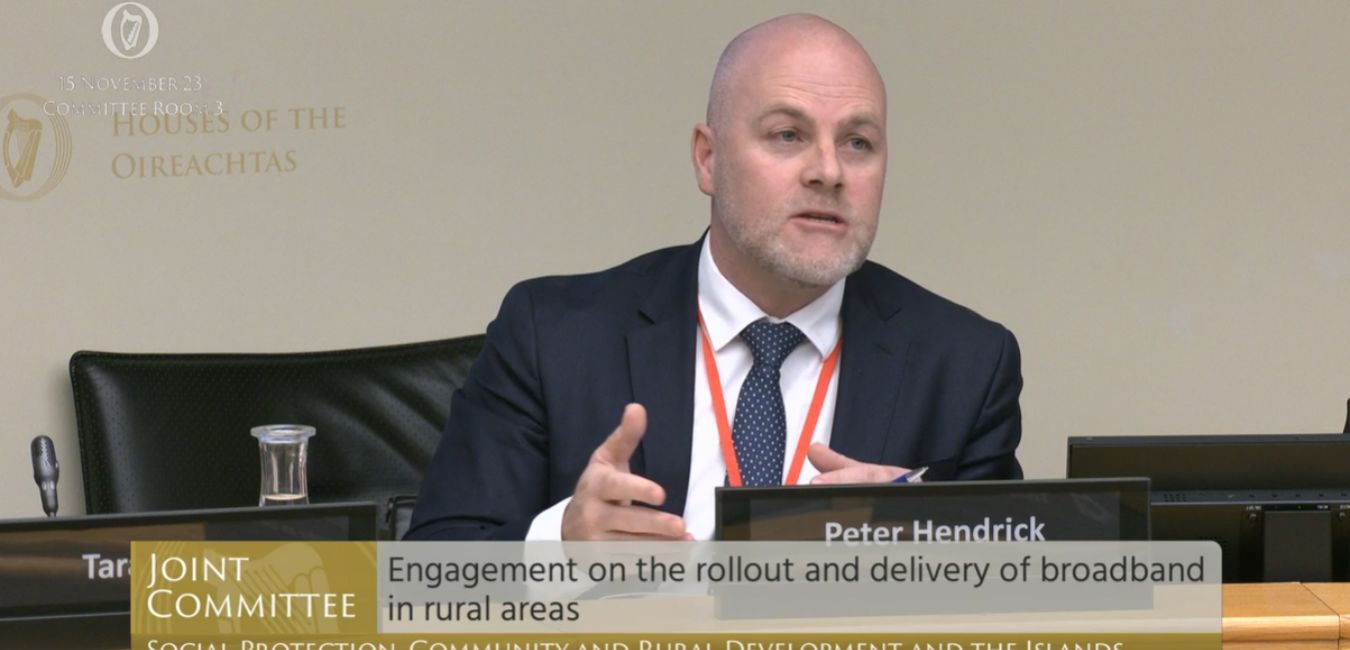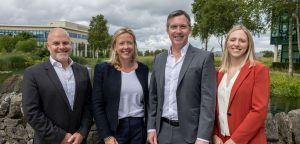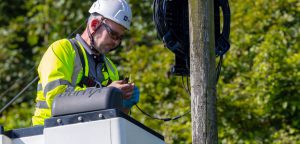Wednesday, 15th November at 9:30am
Thank you Chair, and good morning to the Committee.
My name is Peter Hendrick and I’m the Chief Executive Officer at National Broadband Ireland. I’m joined by my colleagues TJ Malone, who is the CEO of NBI Deployment responsible for building the new NBI network, and Tara Collins, Chief Marketing Officer.
I would like to start by thanking the Committee for the invitation to speak with you all today. We are only too pleased to discuss the latest update on our overall progress with the National Broadband Plan, as well as to provide a more detailed view of some specific areas that the Committee members may be interested in – such as progress in relation to off-shore islands.
The timing of our appearance comes on the back of a major milestone for NBI and the rollout of the NBP.
I am pleased to report that as of today, broadband connections on the NBI network will be available to over 201,000 homes, farms and businesses across the country. This milestone means that over a third of the premises targeted by the NBP now have access to our high-speed fibre network.
Crucially, this will see the network build surpass our targets for this current year.
Further and as noted recently by Minister Ossian Smith, the NBP has seen a much higher take-up rate than had been originally forecast. With over 60,000 connections live on the network, we are now ahead of the connection targets that would have applied, even had there been no Covid-related impact to the rollout. 65 Broadband Providers are contracted to sell services on NBI’s wholesale network and the levels of take-up that we are driving, not only surpass the targets for this project, but also exceed all other international comparisons.
As a reminder for the Committee, currently there are over 564,000 premises in scope, across all 26 counties, and NBI is providing world-class, high-speed fibre broadband infrastructure with minimum speeds of 500 megabits per second. In addition, we are already delivering services of two Gigabits per second.
The rollout of the NBP is almost unrivalled in its ambition and complexity, and we are extremely proud of the progress that is being made across every aspect of the rollout, which I can summarise as follows:
- Over 77% of premises (437,887) have now completed the survey and design stages of the programme.
- 3 in 5 premises (353,684) have moved to or through construction, with over 38% of all premises (215,065) now in the build complete category.
- The number of premises passed by our network and ready to connect is over 201,000, which means the target of 185,000 premises to be passed by the end of the current contract year in January 2024 has already been surpassed.
- Over 60,000 premises are now connected; this is significantly above all previous forecasts, which envisaged 50,000 connections by the end of the current contract year in January 2024.
- Take-up rates are above 40% in areas where the network has been live for longer than twelve months, and the average take-up rate of 30% is well ahead of projections and international comparisons.
I would now like to turn my attention to some specific areas that I think the Committee may be interested in – namely in relation to the islands, Broadband Connection Points and rural schools.
At NBI, we are working to the mandate from Government to ensure that no town, village, or community will be left behind under the National Broadband Plan. No premises is too rural or too remote. This means that delivering broadband infrastructure to the islands is a natural extension of this mandate.
In all, there are 27 offshore islands included in the Intervention Area that are recognised as stand-alone Deployment Areas, and it is our ambition that all islands within our scope will be connected by the end of the programme. Today, 10 of these islands are already live, and we are actively working on a number of other islands to deliver our new high-speed broadband network.
Given their remote location, unique topology and obvious logistical challenges, the islands undoubtedly present additional complexity and have been poorly served with utilities historically. However, we are determined to ensure access to high-speed broadband for these locations.
It is also worth mentioning that NBI’s strong progress on the islands has been made possible with the tremendous support of several stakeholders, namely the local authorities, the Department of the Environment, Climate and Communications, the Department of Rural & Community Development, the Irish Island’s Federation (Comhdháil na nOileán), and most of all, the island residents.
Next, if I may turn to the Broadband Connection Points (BCPs as I’ll refer to them) and schools. With BCPs and schools, it’s important to recognise that, taken together, we’re building a network of over 950 strategically located connection points or hubs for community use.
BCPs are public locations that have been chosen to receive high-speed connectivity as part of the NBP. These locations have been selected by local authorities and include public areas such as community halls, libraries, sports facilities, enterprise hubs, tourist locations and other public spaces.
Some 283 BCPs have been installed with high-speed connectivity by NBI. These sites are the beating hearts of rural communities and have been a critical part of providing accessible, high-speed broadband to rural residents ahead of fibre connections being available directly to every single premises in the Intervention Area.
In relation to schools, NBI is working with the Department of Education and Skills and the Department of the Environment, Climate and Communications to connect 672 primary schools to high-speed broadband under the NBP. To date 669 schools have been installed by NBI, with the last remaining 3 schools to be installed this month.
Before I hand back to the Committee members and invite questions, I would like to conclude with some recent analysis that helps place Ireland’s NBP in the context of other projects across Europe.
Last month, the European Commission launched its inaugural report on the state of the digital decade, which provides the most comprehensive review of the EU’s progress towards a successful digital transformation, as set out in the Digital Decade Policy Programme 2030.
Importantly, the report specifically noted that Ireland is ‘expected to make a positive contribution to the collective efforts to achieve the EU’s Digital Decade targets’, and in its summary of Ireland’s performance, called out that “Ireland is progressing well with the implementation of the National Broadband Plan (NBP) and the connection of primary schools to broadband networks.”
It is our view that the report rightly highlights Ireland’s leadership position in Europe, and at NBI we are proud to play a key role in expanding the rollout of future-proofed, high-speed broadband to every premises in the country to ensure equal access and equal opportunities.
Thank you for your attention. TJ, Tara and I will be pleased to answer your questions.



